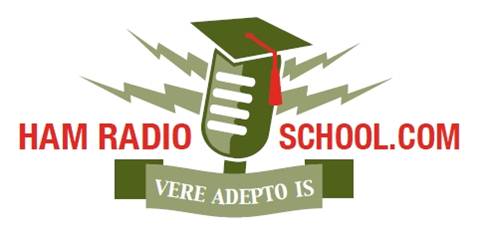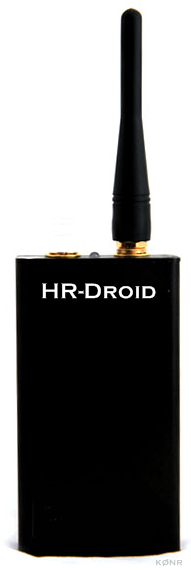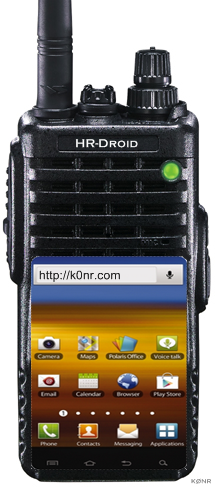Author Archive
 CQ VHF Magazine
CQ VHF Magazine
 The Android HT – Part 3
The Android HT – Part 3
 New GNT Frequency
New GNT Frequency
 Easy Online Circuit Analysis
Easy Online Circuit Analysis
 Shack Talk on HamRadioSchool.com
Shack Talk on HamRadioSchool.com
 I’ve been writing a few articles for the HamRadioSchool.com web site during the past few months. Most of these are aimed at newly licensed Technicians but other radio amateurs may find them useful.
I’ve been writing a few articles for the HamRadioSchool.com web site during the past few months. Most of these are aimed at newly licensed Technicians but other radio amateurs may find them useful.
Click on this link to go directly to the Shack Talk articles:
- A Half-Wave Antenna for Your 2 Meter Handheld Radio
- VHF FM Station At Home
- Yes, Band Plans Do Matter
I also put together a quick reference chart for Technician License Bands and Modes.
Check out the other content available on HamRadioSchool.com.
73, Bob K0NR
 The Android HT – Part 2
The Android HT – Part 2
 My article on the Android HT generated some interesting comments and ideas. Thanks so much! One of the main themes in the feedback is to have the radio be “faceless”, with the user interface done on a mobile device (i.e., smartphone or tablet). The mobile device would communicate to the transceiver via Bluetooth (or maybe WiFi). This approach has the advantage of separating the radio hardware (which probably doesn’t need to change very often) from the compute/display hardware (which is on a faster-paced technology path). I went ahead and hacked together a concept photo of such a device (click the photo to enlarge it). This device could interface with any mobile device that has a Bluetooth interface, so it would be independent of OS on the mobile device (yes, you could use your iPhone).
My article on the Android HT generated some interesting comments and ideas. Thanks so much! One of the main themes in the feedback is to have the radio be “faceless”, with the user interface done on a mobile device (i.e., smartphone or tablet). The mobile device would communicate to the transceiver via Bluetooth (or maybe WiFi). This approach has the advantage of separating the radio hardware (which probably doesn’t need to change very often) from the compute/display hardware (which is on a faster-paced technology path). I went ahead and hacked together a concept photo of such a device (click the photo to enlarge it). This device could interface with any mobile device that has a Bluetooth interface, so it would be independent of OS on the mobile device (yes, you could use your iPhone).
Such an approach opens up a variety of use models. Imagine sticking the transceiver in your backpack and using an app on your smartphone to enjoy QSOs when hiking. Alternatively, the radio could hang on your belt. At home, the radio could be left in some convenient location, connected to an external antenna on the roof and operated from the mobile device. (Low power Bluetooth is said to have a range of about 10 Meters.) These are just a few thoughts…I am sure you can think of others.
I would expect the original Android HT concept to be easier to use for casual operation, due to the All-In-One Design with dedicated hardware volume control, channel select and PTT switch. I am assuming those functions would be implemented in software in the faceless implementation, which would likely be less convenient. Most mobile devices have their own GPS system included, so that would mean one less thing that has to be in the radio.
The other idea that surfaced in the feedback is using Software Defined Radio (SDR) technology to implement the transceiver. This would provide a higher degree of flexibility in generating and decoding signals, enabling additional areas of innovation. That is a great idea and will require a whole ‘nuther line of thinking.
73, Bob K0NR
 The Android HT
The Android HT
 I’ve been watching all of the innovative work going on in the smartphone and tablet arena and wondering how we could get more of that going in ham radio. To be sure, there are always radio amateurs developing creative technology. Some examples are adaptations of D-STAR, IRLP, improvements on APRS and sound card modulation modes. However, amateur radio is missing a standardized platform for handheld communications. Such a radio platform could open up lots of software innovation in this space.
I’ve been watching all of the innovative work going on in the smartphone and tablet arena and wondering how we could get more of that going in ham radio. To be sure, there are always radio amateurs developing creative technology. Some examples are adaptations of D-STAR, IRLP, improvements on APRS and sound card modulation modes. However, amateur radio is missing a standardized platform for handheld communications. Such a radio platform could open up lots of software innovation in this space.
What I have in mind is a dualband (2M/70cm) handheld transceiver that is built on top of the Android operating system. (Sorry Apple Fan Boys, iOS is a non-starter based on Apple’s walled garden philosophy.) This radio would have some of the hardware features we now take for granted in smartphones: GPS, WiFi, USB, maybe even a camera. I’d also include APRS hardware built-in, similar to the Yaesu VX-8GR or the Kenwood TH-D72A. I’ve hacked together a concept photo shown on the left of this post (click to enlarge). We would probably want to maintain some of the most important direct hardware controls such as PTT, volume and channel select. The rest of the user interface would be done via a touchscreen display, where the power of the Android OS comes into play.
While this hardware configuration is exciting, the real power comes from having a software developers kit (SDK) with a stable Application Programming Interface (API). This would unleash the creativity of all those software-oriented hams out there and a plethora of apps would emerge. There are plenty of ham radio apps available on the Apple and Android platforms…it’s just they are missing the radio as part of the package. An obvious area for innovation would initially be in APRS or maybe D-STAR. We could actually have the equivalent of SMS text messaging on ham radio, backed up via the WiFi connection. (Yeah, this kind of exists already but it is really cumbersome to use due to the braindead menu-driven user interfaces of current radios.) Just think how easy programming the radio would be with a touchscreen approach.
This is the type of product development that requires significant investment, but the technology is readily available. I suppose a garage shop operation could get this done but one of the big radio manufacturers could easily pull this off. Maybe one of those upstarts from China might want to take this on. Whoever does it, just send me $5 per unit and I’ll be happy ![]() .
.
That’s my best idea for this morning. What do you think?
73, Bob K0NR












